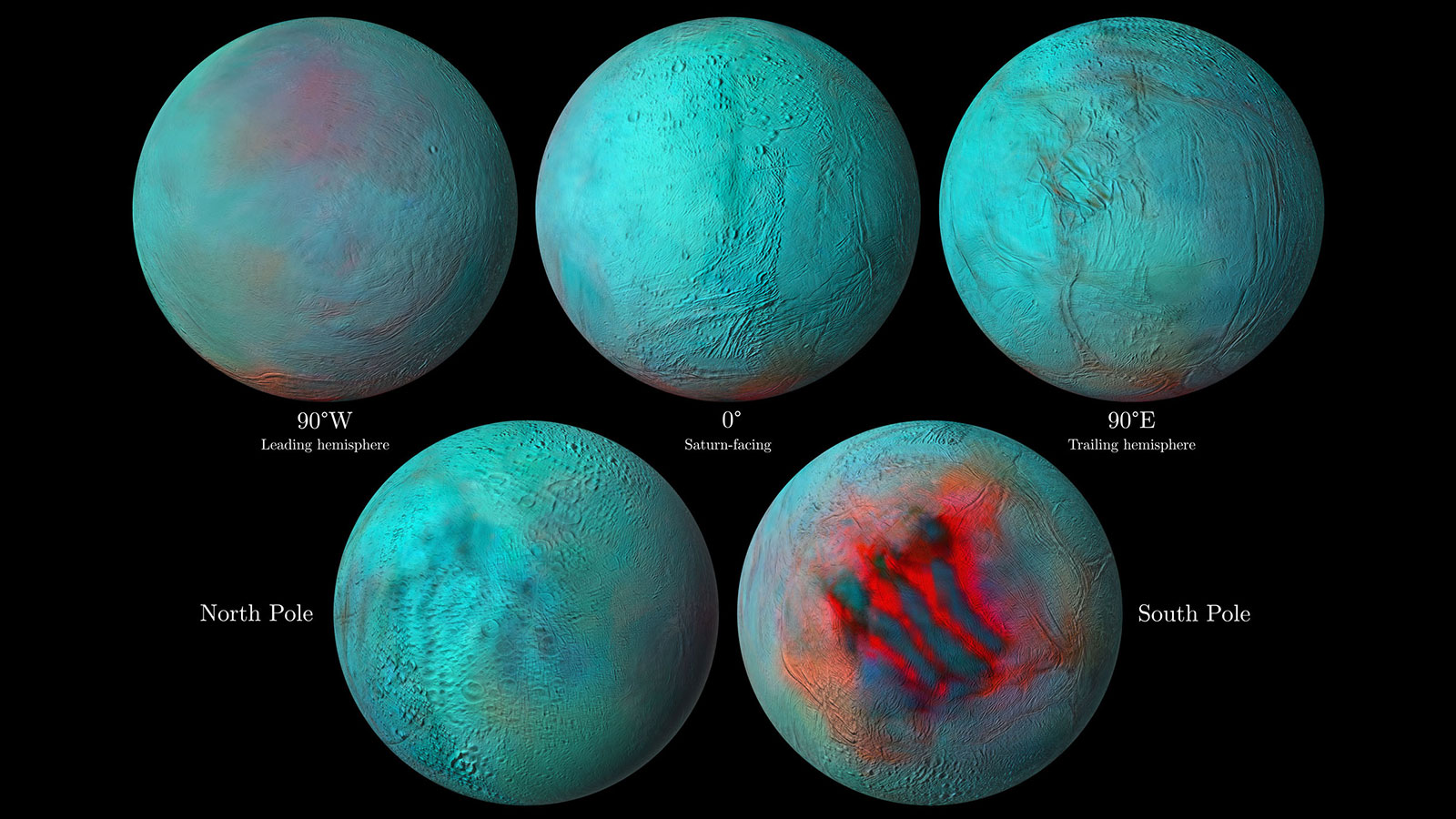Saturn's ocean moon Enceladus has fresh ice in unexpected place
Enceladus may be even more interesting than we thought.
Saturn's geyser-spewing moon Enceladus may be even more active than scientists had thought.
Fresh images created using data from NASA's dead Cassini spacecraft show that Enceladus' northern hemisphere was resurfaced with ice relatively recently. This new information adds to the known activity in the southern hemisphere, where Cassini spotted more than 100 geysers blasting icy water into space.
Researchers spotted the northern changes after looking at the heat signature of Enceladus, using reflected sunlight parsed with Cassini's visible and infrared mapping spectrometer instrument, or VIMS.
Related: Photos of Saturn's ocean moon Enceladus
"Thanks to these infrared eyes [on Cassini], you can go back in time and say that one large region in the northern hemisphere appears also young and was probably active not that long ago, in geologic timelines," Gabriel Tobie, a study co-author and VIMS scientist at the University of Nantes in France, said in a NASA statement.
The team combined VIMS data with visible imagery captured by Cassini to create a new, global map of Enceladus in multiple wavelengths of light, both infrared and visible. The map shows that the infrared signals correlate with recent geologic activity on the moon, the researchers said.
For example, heat signatures match up with the "tiger stripe" gashes near Enceladus' south pole. The tiger stripes are the launch pad for the moon's dramatic geysers, which send water and other material from Enceladus' subsurface ocean out into the void.
Breaking space news, the latest updates on rocket launches, skywatching events and more!
To the surprise of scientists, however, the new map also shows infrared features in the moon's northern hemisphere. The data suggests that icy resurfacing also happened up north, but how is not yet clear. The changes could have been due to more icy jets, or slower ice movements through cracks in the crust, team members said.
Enceladus is one of the most promising abodes for alien life in the solar system. In addition to the subsurface ocean and geological activity, the moon likely has an energy source that organisms could tap into — chemical reactions perhaps similar to those that sustain life near Earth's deep-sea hydrothermal vents.
There is no future mission planned yet to target Enceladus, although scientists made the pitch for one during a presentation coordinated by the U.S. National Academies of Sciences on March 31. In the meantime, researchers must rely on data collected by older missions.
Cassini will be a continuing help in providing such information. The mission gathered data about Saturn and its many moons for 13 years before, low on fuel, it was sent on a deliberate suicide plunge into the gas giant's thick atmosphere. Cassini's long-term observations show how the planet and its moons changed over time, providing vital questions for future spacecraft to explore in more detail.
The new study was published online last month in the journal Icarus. The research was led by Rozenn Robidel, a researcher at the laboratory of planetology and geodynamics at France's National Centre for Scientific Research (CNRS).
Follow Elizabeth Howell on Twitter @howellspace. Follow us on Twitter @Spacedotcom and on Facebook.

Elizabeth Howell (she/her), Ph.D., was a staff writer in the spaceflight channel between 2022 and 2024 specializing in Canadian space news. She was contributing writer for Space.com for 10 years from 2012 to 2024. Elizabeth's reporting includes multiple exclusives with the White House, leading world coverage about a lost-and-found space tomato on the International Space Station, witnessing five human spaceflight launches on two continents, flying parabolic, working inside a spacesuit, and participating in a simulated Mars mission. Her latest book, "Why Am I Taller?" (ECW Press, 2022) is co-written with astronaut Dave Williams.

